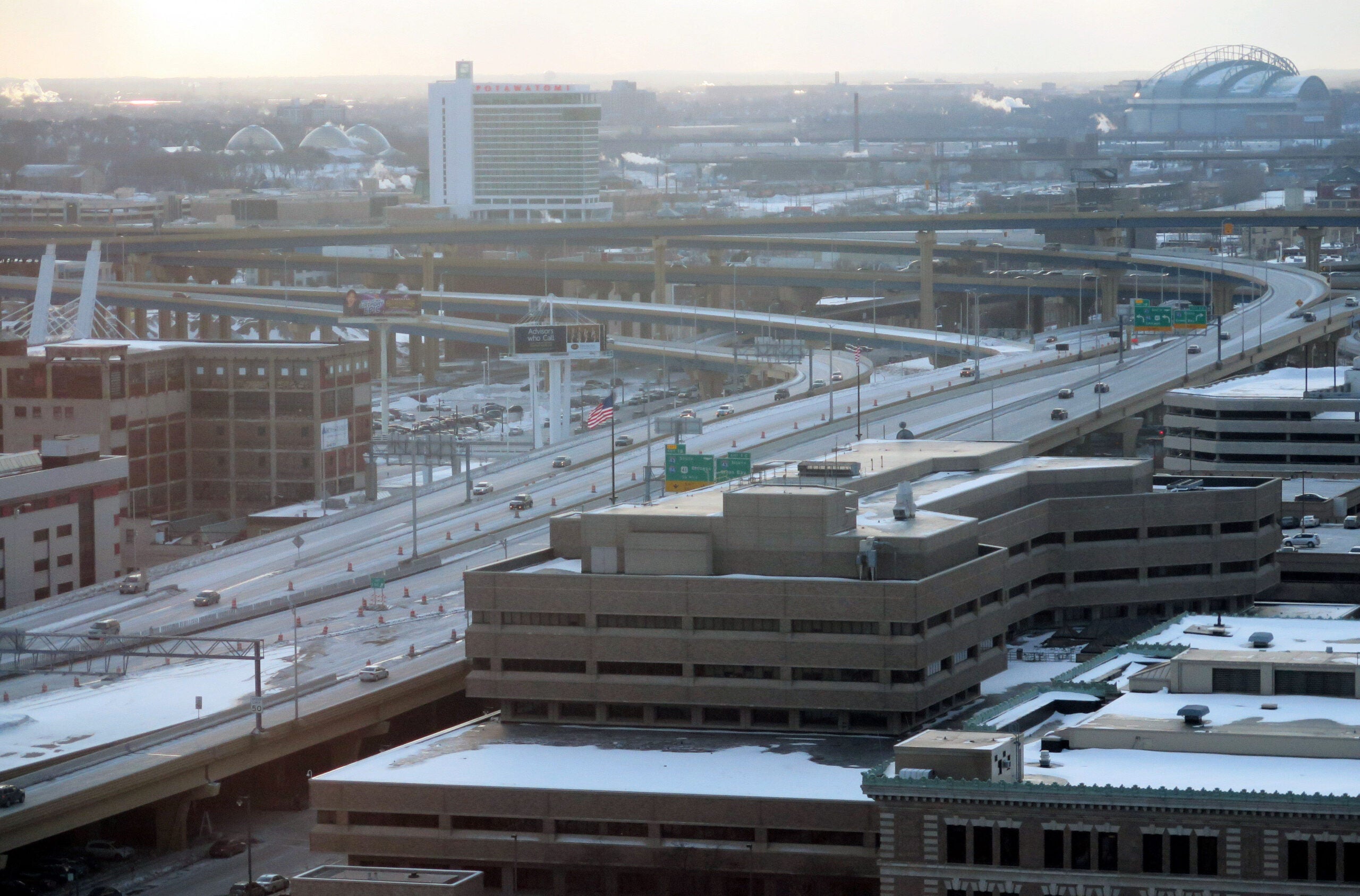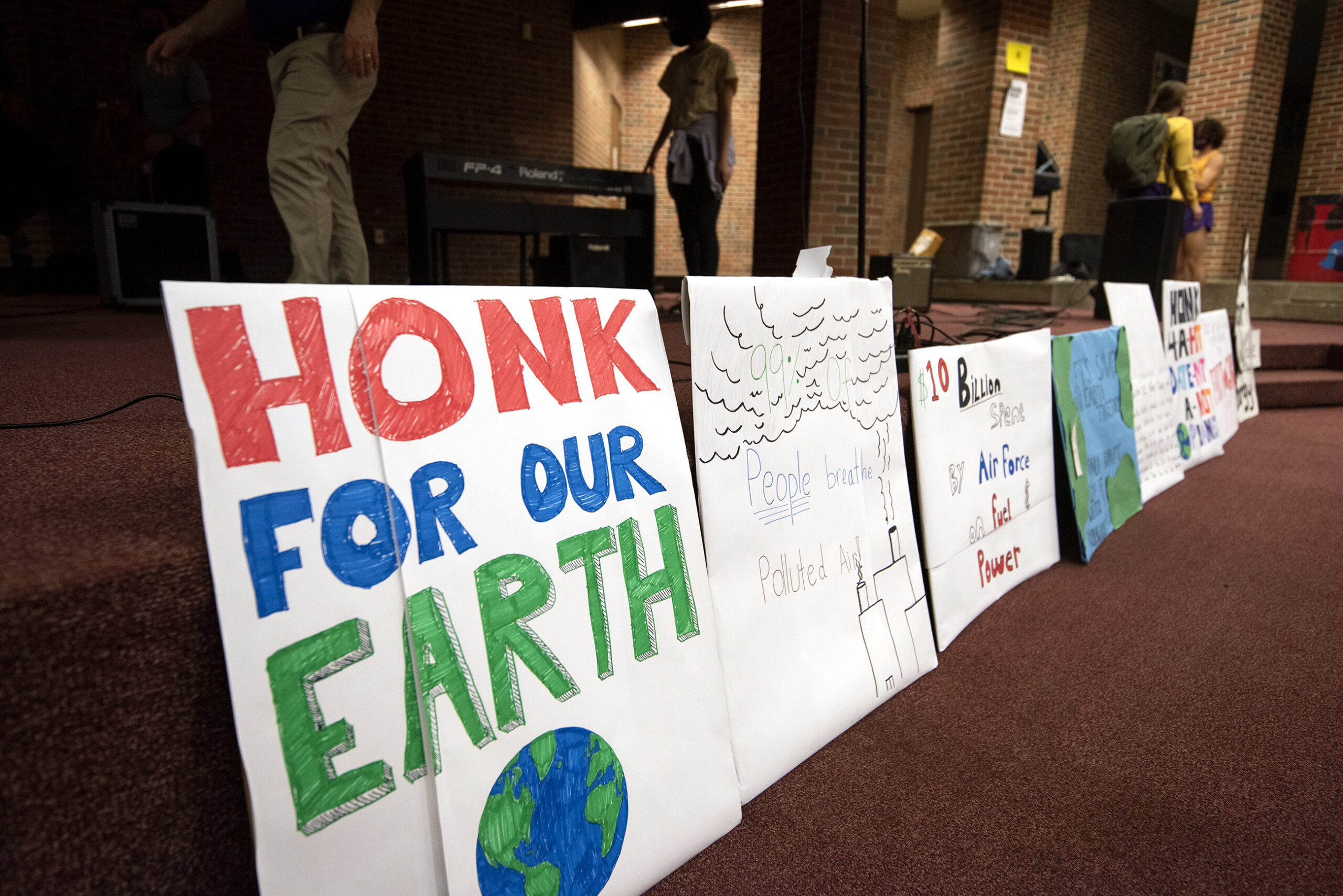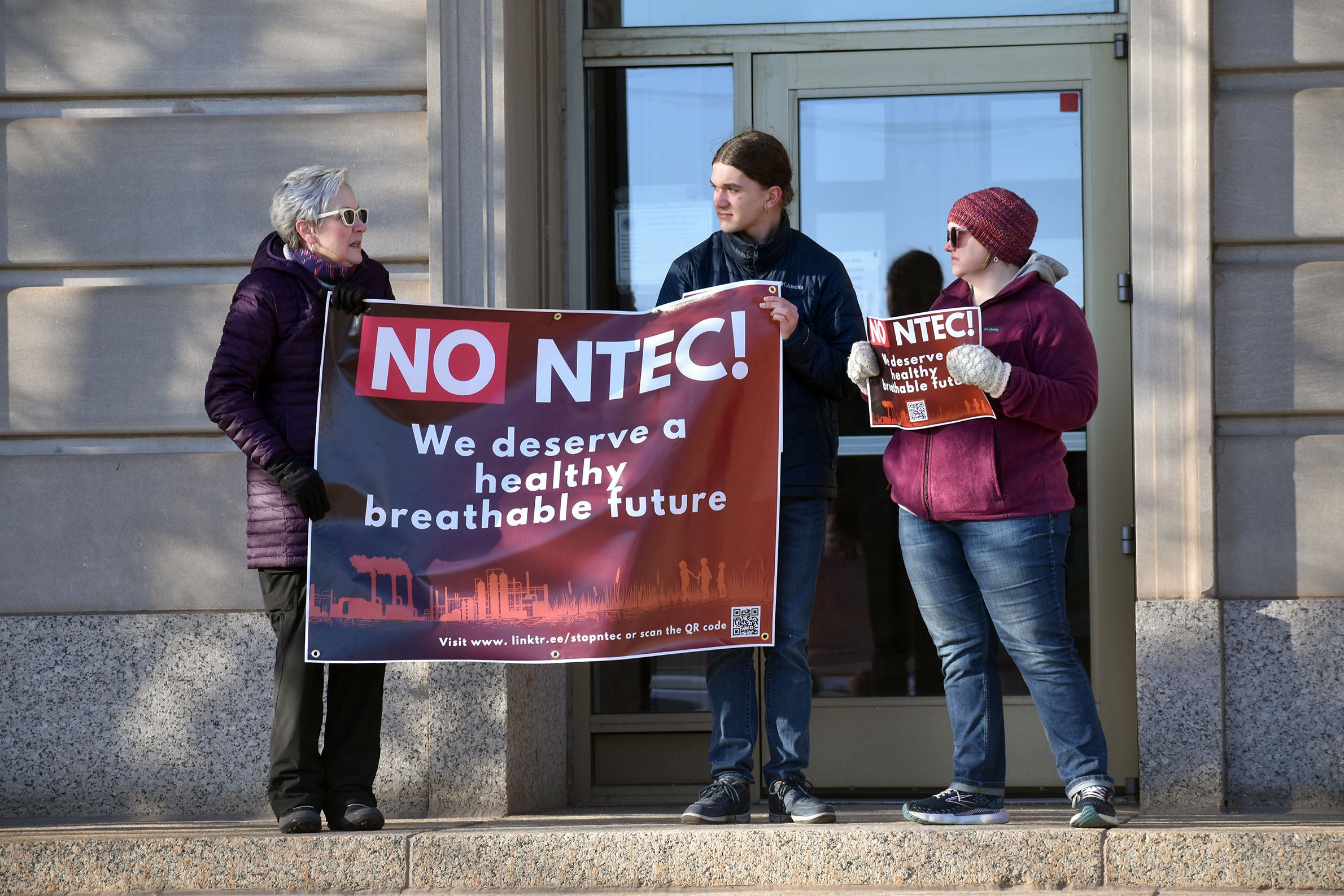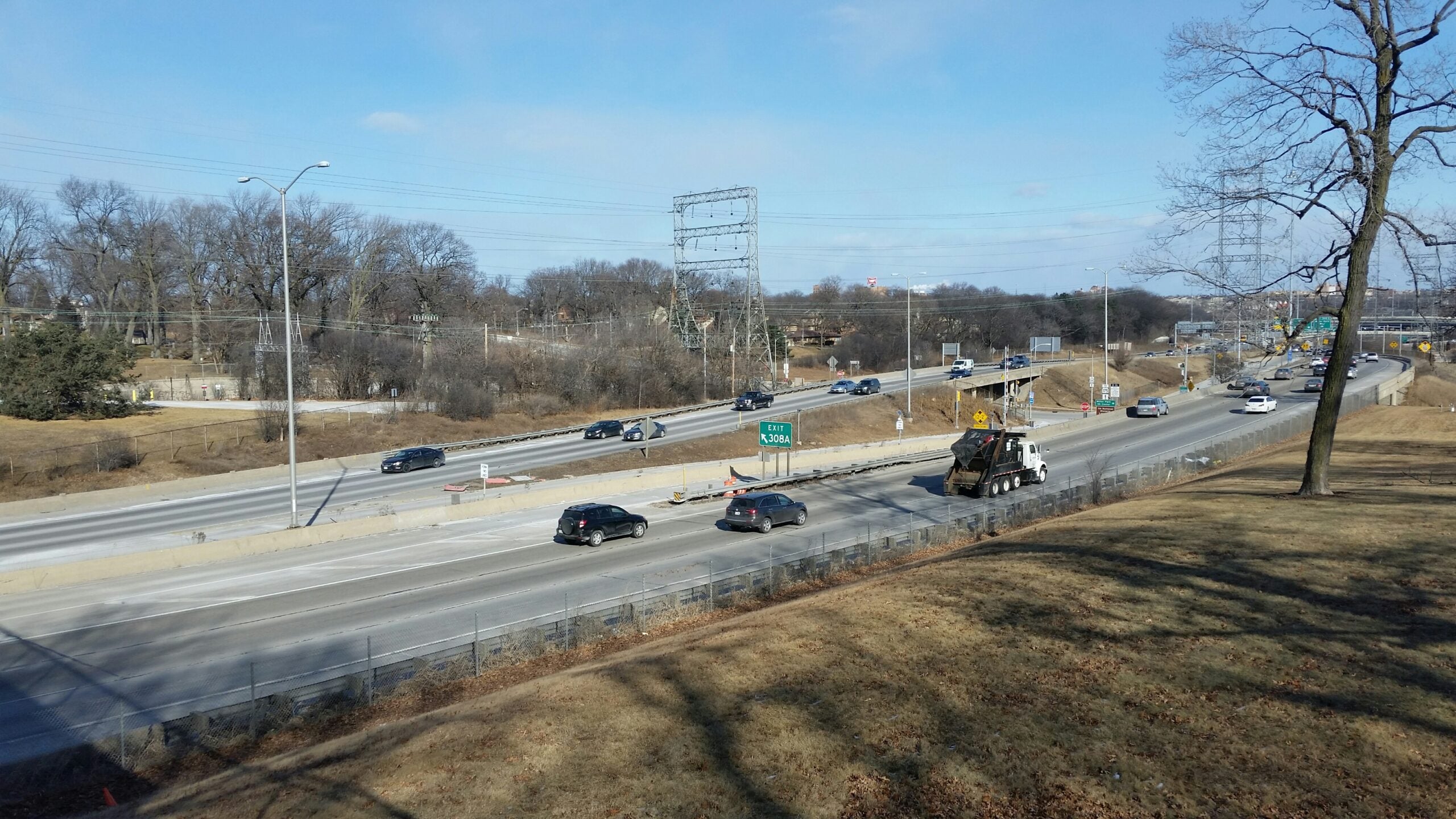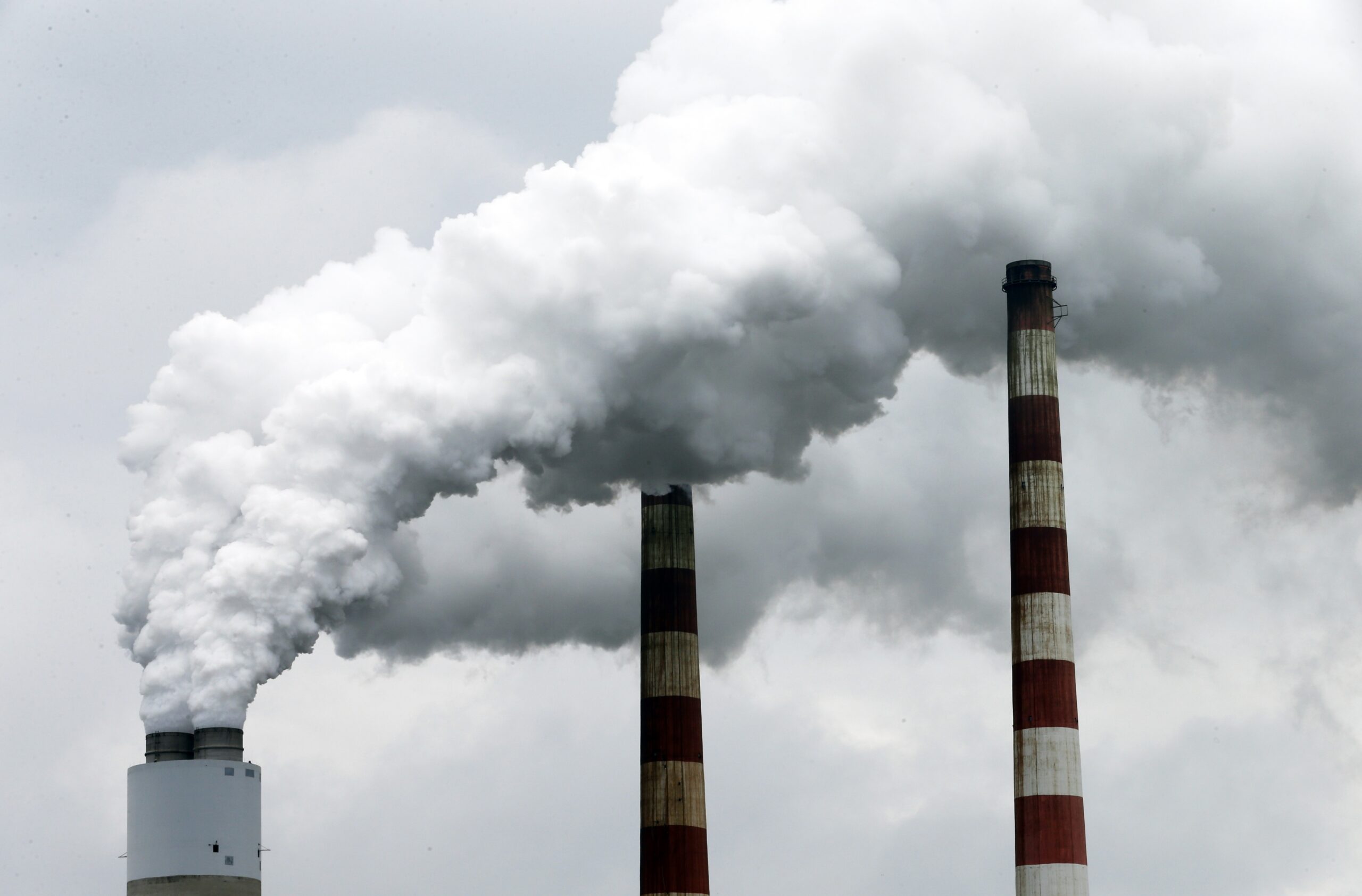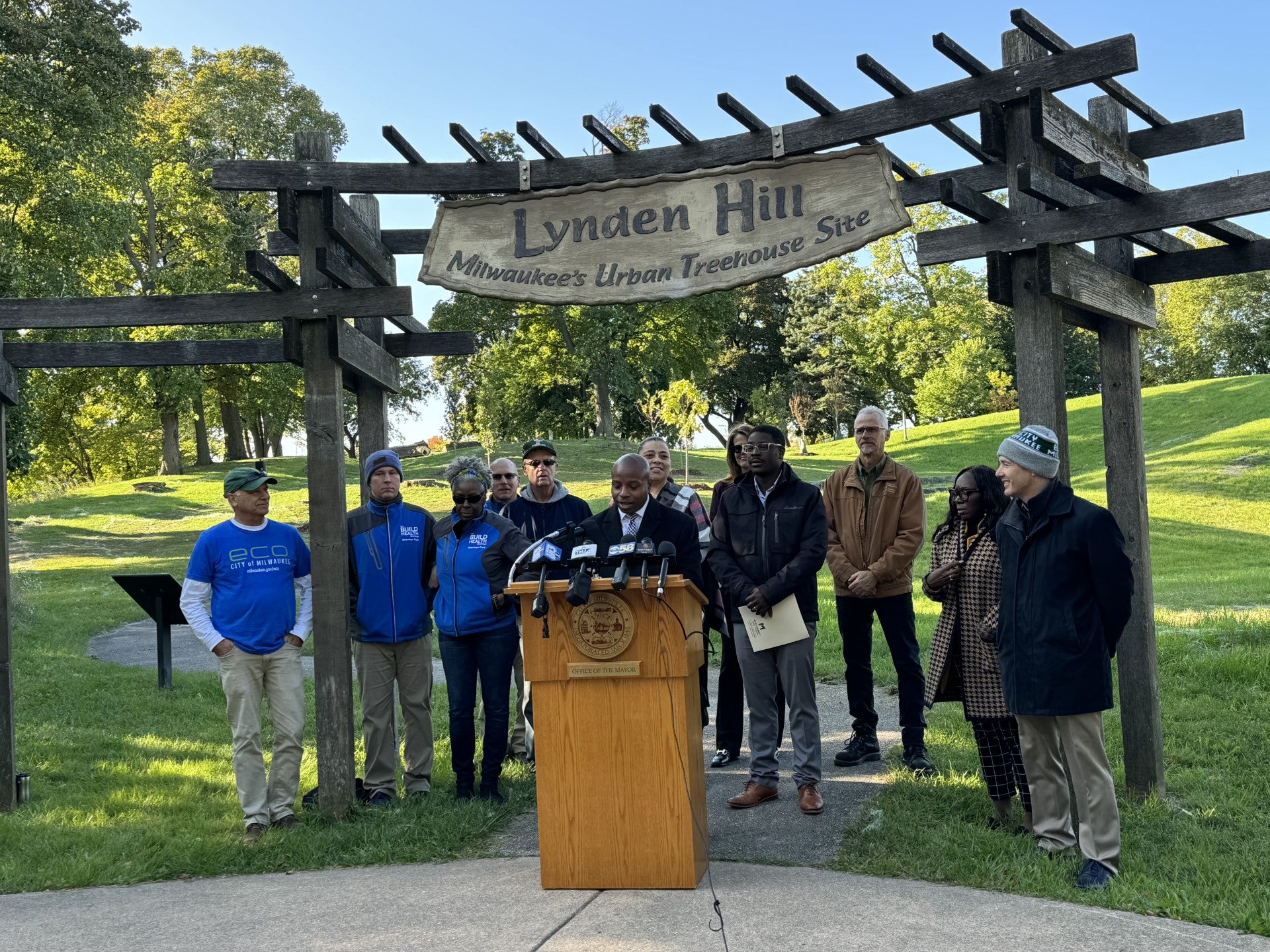Milwaukee is creating its own Green New Deal, but leaders say their version will have “more teeth” than the federal version. The joint city and county plan aims to reduce racial and income inequality by creating a new labor market of green jobs.
In February, U.S. Sen. Edward Markey, D-Mass. and U.S. Rep. Alexandria Ocasio-Cortez, D-N.Y., released a resolution for their Green New Deal, calling for a proposed economic stimulus package to address climate change and economic inequality over 10 years.
During a press conference Thursday at the Milwaukee County Courthouse, Milwaukee County Supervisor Supreme Moore Omokunde said one of the criticisms of the federal proposal is the structural details.
Stay informed on the latest news
Sign up for WPR’s email newsletter.
“Local government is where things need to take place,” Omokunde said. “This is our attempt at looking at how jobs and economic equity and climate change can meet and be tackled at the same time.”
A Milwaukee City-County Joint Taskforce on Climate and Economic Equity will lead the way in mapping out the city’s Green New Deal. The group will convene area leaders over the next six months to make recommendations to achieve net greenhouse gas emission reductions of 45 percent of 2010 levels by 2030 and achieve net zero greenhouse gas emissions by 2050 or sooner.
A 2018, report from the Intergovernmental Panel on Climate Change (IPCC) found the global climate is diverting from its prehistoric pattern, due primarily to human activity since the Industrial Revolution, including increased greenhouse gas emissions, deforestation and other land use changes.
“We have about 11 years to dramatically change our whole economy — that is a massive undertaking,” said Robert Kraig, executive director of Citizen Action Wisconsin, Thursday. “At a national level, we are taking no action, whatsoever. In Wisconsin, half of the government will not act either, so local governments have stepped up to the plate.”
Local leaders say reducing greenhouse gases gives Milwaukee another opportunity to put people to work. Using the Wisconsin Poverty Measure, in 2016, 30.3 percent of black residents and 18.5 percent of Latino and other minority residents lived in poverty, compared to 10 percent of white residents.
Overall poverty in Milwaukee County is 17.5 percent, compared to 10.8 percent statewide.
“We have the worst racial disparities in the country, and some of the worst pockets of poverty in the country and we have been losing ground for 40 years, since the deindustrialization,” Kraig said. “This is a great opportunity. I know it’s scary, that we have already created a planet that is different than what we’ve evolved in. But we can think about the opportunity to employ people.”
Wisconsin Public Radio, © Copyright 2024, Board of Regents of the University of Wisconsin System and Wisconsin Educational Communications Board.

